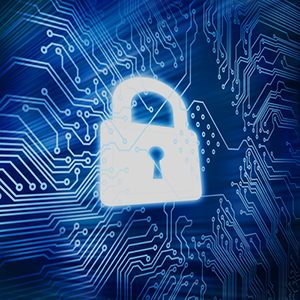
Is Ransomware On The Rise?
The WannaCry attack announced to the general audience a new threat—ransomware.
With the damages it caused, from hundreds of companies to government agencies, the attack took its victims millions of dollars to repair. For organizations like the NHS, it was irreparable damage as around $115m was lost, and over 19,000 appointments were canceled.
The global outcry in 2017 was loud enough to cause panic among businesses and government firms.
However, there was no massive attack in 2018 and 2019, at least that deserved media attention. So, it is safe to say is ransomware over?
How Common Is Ransomware Attack?
Ransomware attacks happen every day. However, unlike the WannaCry attack, most are isolated cases that don’t get enough media attention.
In 2015, there were just 3.8 million global ransomware attacks. That figure increased by over a hundredfold in 2016 to about 638 million attacks. Although the number fell to 187.9 million in 2019, that’s a far cry from what it was in 2015.
The attacks over the years have been more targeted. The year 2017 was the first time a cyberattack group mainly targeted consumers.
The spread of cryptocurrency made it possible to target individuals.
Let’s take a look at some of the most recent cases of ransomware attacks.
Florida Cities Attack
In 2019, two Floridian cities, Lake City and Riviera Beach, fell victim to ransomware attackers. The attackers held on to the information of thousands of the cities’ residents.
They had to pay the ransom to get access to their data. For Lake City, the attackers took out online credit card payment, email, and landline phone systems. Even after paying the ransom of $460,000 in Bitcoin, the hackers refused to release the digital keys to Lake City.
Riviera Beach on the other hand was lucky but had to cough out $600,000 in Bitcoin to get access to their information.
US School Districts Attack
Ransomware attackers have also targeted school districts. The attacks were severe that it caused delays in school resumptions in three states, New York, Connecticut, and Arizona.
The 1039 schools that fell victim to the attackers were in 72 school districts spread all over the United States. Of the 72 districts attacked, 11 happened between the end of October and December 2019. November was the worst month as 9 school districts were attacked in that month.
Most school districts stood their grounds, but Port Neches-Groves, a small independent school district, ended up paying the ransom.
A year earlier, about 119-12K schools were victims of ransomware.
The VCPI Nursing Data Breach
Ransomware attackers target almost anyone. Virtual Care Provider Inc., a Milwaukee based IT company that provides Data storage, Internet access, IT consulting, and security services, became part of a growing number of health care provider assisters that are victims of ransomware.
The attackers deprived VCPI access to their clients’ information and critical services. They demanded a ransom of $14 million.
Reports say the owner, Karen Christianson, said the attack could result in the closure of the business and death of some senior citizens, especially those living in a nursing home that depended on VCPI.
However, VCPI finally rebuilt its systems, but the damage was already done.
Energias de Portugal Data Attack
Attackers also targeted and encrypted the systems of Energias de Portugal, the world’s 4th largest producer of wind energy.
Although Energias de Portugal, EDP, claimed that their critical systems were not affected, the EDP Online Customer area and the service line had limited access. EDP said they reported the incident to authorities.
The attackers demanded $10.9 million in Bitcoin and threatened to release 10 TB of documents to the public.
How Does Ransomware Concern You?
You can be a victim of ransomware if you do not take the necessary precautions. Although most ransomware attacks don’t target individuals, WannaCry is an instance where they can.
Besides, since most ransomware attacks go unreported, ransomware attackers might target you too. This is not to alarm you but to make you understand the severity of ransomware. Ransomware attackers are bad actors without conscience.
If you run an organization, you should ensure your security architecture is up to date and avoid unquestionable activities online.
Is Ransomware Attack Over?
With the recent trends, you can see that ransomware is over; but on the rise. Although the numbers show that it is low compared to that of 2016, you should protect your system to avoid any form of attack, even.
Since ransomware malware is a sophisticated malware that tricks antiviruses and other traditional security systems, businesses can breach security gaps with advanced endpoint protection. Go here to learn more about advanced endpoint protection.
Please give us a star rating based on your experience.


 (3 votes, average: 3.67 out of 5, rated)
(3 votes, average: 3.67 out of 5, rated)